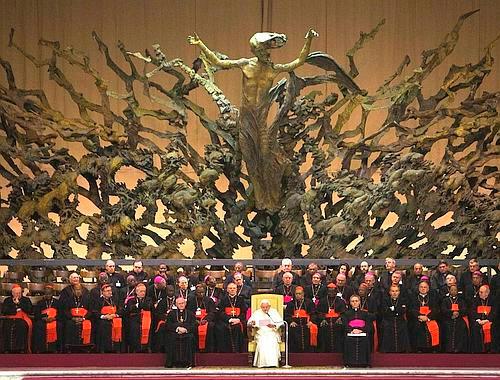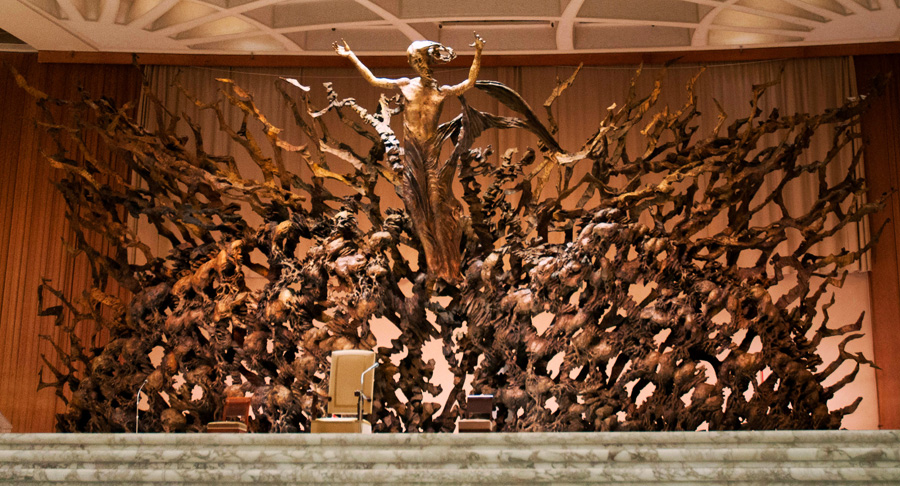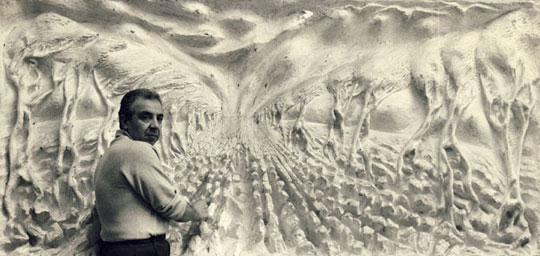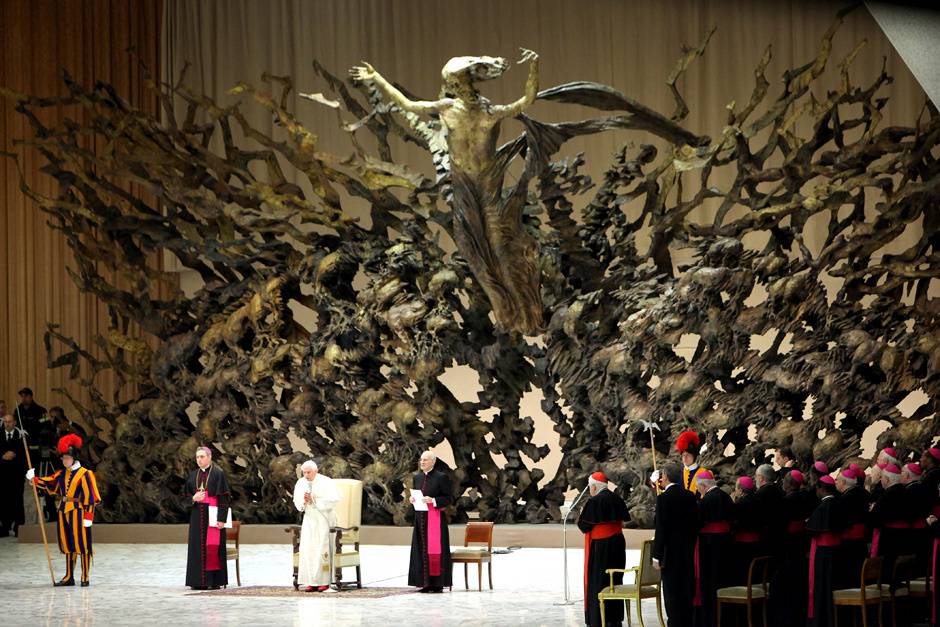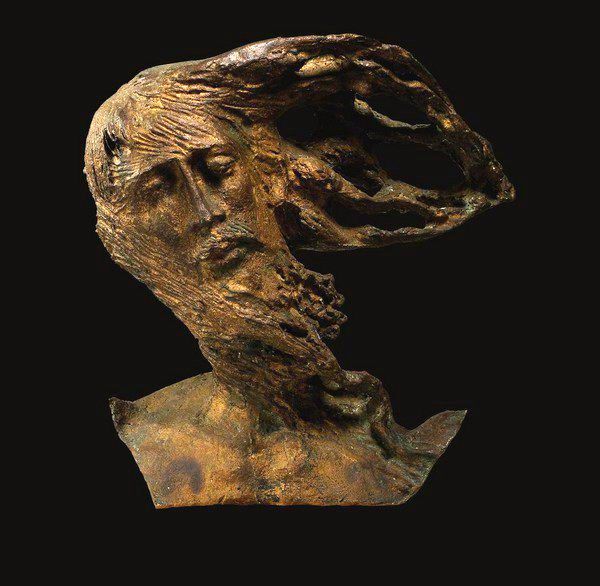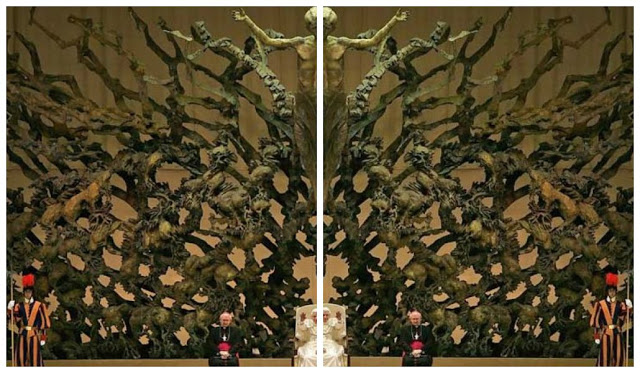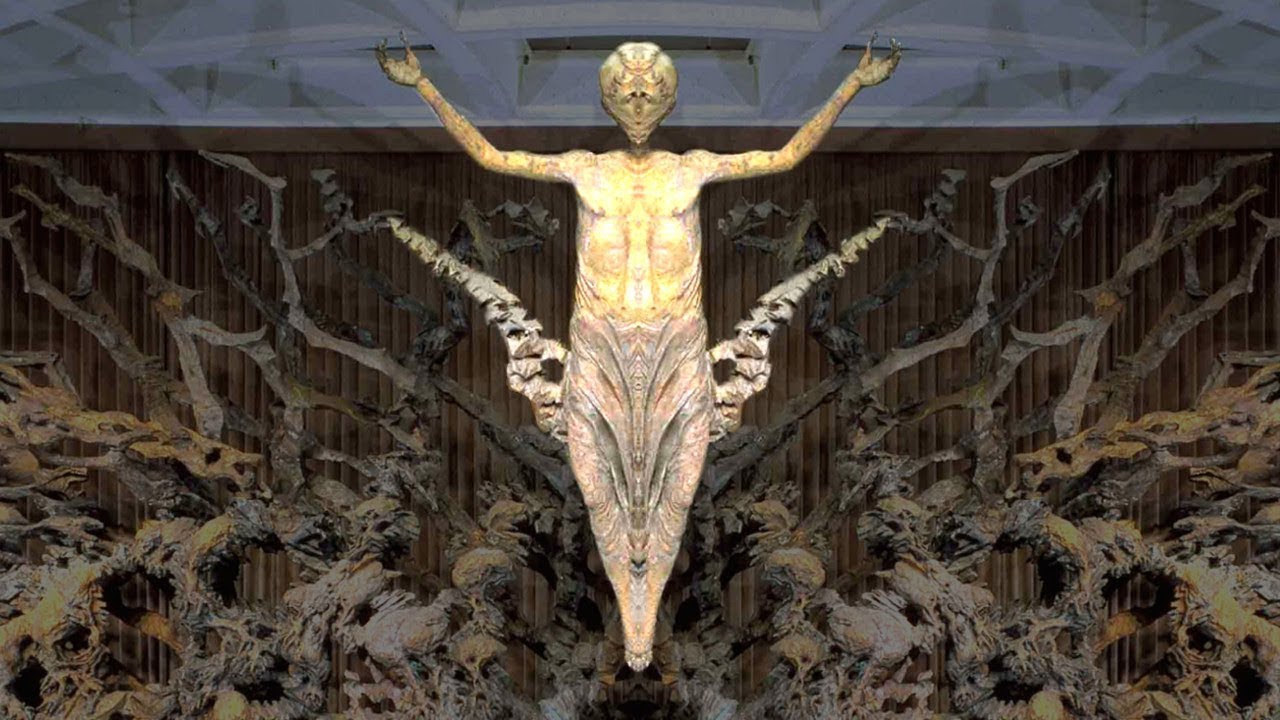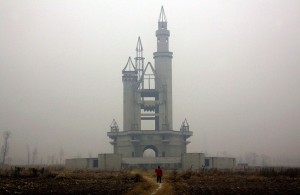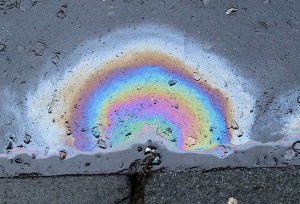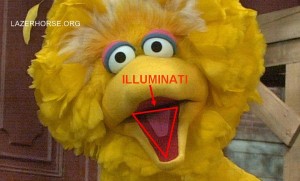“The Resurrection”: Pope’s Intriguingly Sinister Sculpture
The Catholic church is not one to shy away from gaudy, impressive, terrifying displays of wealth and power.
Over the centuries, Catholicism has burned fear into the minds and souls of children and adults alike.
Although, in recent years, they have toned down their medieval horror show, they can’t help but unleash their inner beast on occasion.
The sculpture we’re featuring today is called The Resurrection and was created by Pericle Fazzini. It sits in the Paul VI Audience Hall in Rome, a large building completed in 1971, which the pope uses to address his people if it’s raining outside.
Apparently, the sculpture was designed to show the anguish of modern humanity in the face of nuclear armageddon.
The sculpture depicts Jesus rising from a nuclear crater in the Garden of Gethsemane. I know, it looks Photoshopped, but it’s not. This is not a film set or a green screen, they actually made this.
Completed in 1977, The Resurrection was restored in 2011. The monstrosity was originally modelled in polystyrene, which was then used for the casting process.
During construction, the fumes produced by burning plastic gave Fazzini a blood clot, which, although horrible, seems rather fitting. Here’s Fazzini in happier days:
The final piece consists of 8 metric tons of bronze/copper-alloy. It measures 66 x 23 x 10 feet.
Fazzini wrote a book about the sculpture; in it, he says:
“Suddenly there came to me the idea of Christ preaching peace for 2,000 years and the place where he prayed for the last time: the olive grove of Gethsemane. I had the idea of depicting Christ as if he were rising again from the explosion of this large olive grove, peaceful site of his last prayers. Christ rises from this crater torn open by a nuclear bomb; an atrocious explosion, a vortex of violence and energy.”
As you might expect, conspiracy aficionados have gone to town, claiming that the statue depicts Baphomet.
The Knights Templar were accused of worshipping Baphomet, who has since become a mainstay in occult and Illuminati symbolism (and pop star’s artwork).
If you look at the right-hand side, as in a mirror, you can quite clearly see Baphomet’s goaty head staring back at you:
To be fair, that does look like a goat, but if I was involved in Baphomet worship and wanted to keep it a secret, I wouldn’t build a huge monument to Baphomet as a backdrop to the pope’s weekly audience.
Other conspiracy buffs have attempted to decode the numerology behind Fazzini’s The Resurrection, proving, quite literally, nothing at all.
Even David Icke has weighed in on the debate, saying:
“The ‘resurrection’ of what, exactly? Jesus with scales? Can you imagine what goes on in this room at night when the tourists and believers have gone home?”
Thanks, David, we can always rely on you to make good sense.
A website called “The End Time” is unimpressed by the sculpture, too, believing it to be ugly and evil. They write:
“You wonder what goes through a man’s mind to come up with a horrifyingly evil looking depiction such as that. Remember, Catholics adhere to doctrines and traditions that are not biblical, so the likelihood exists that Fazzini was not saved and therefore had a blinded, depraved mind.”
Personally, I like it. It’s an impressive and strikingly weird lump of metal. Understated, it is not.
On the other hand, the cash that it must have cost could certainly have been better spent.
MORE SCULPTURES:
THE AMAZING STATUES OF MONGOLIA
HUGE MAO ZEDONG STATUE BUILT THEN DISMANTLED IN RURAL CHINA

